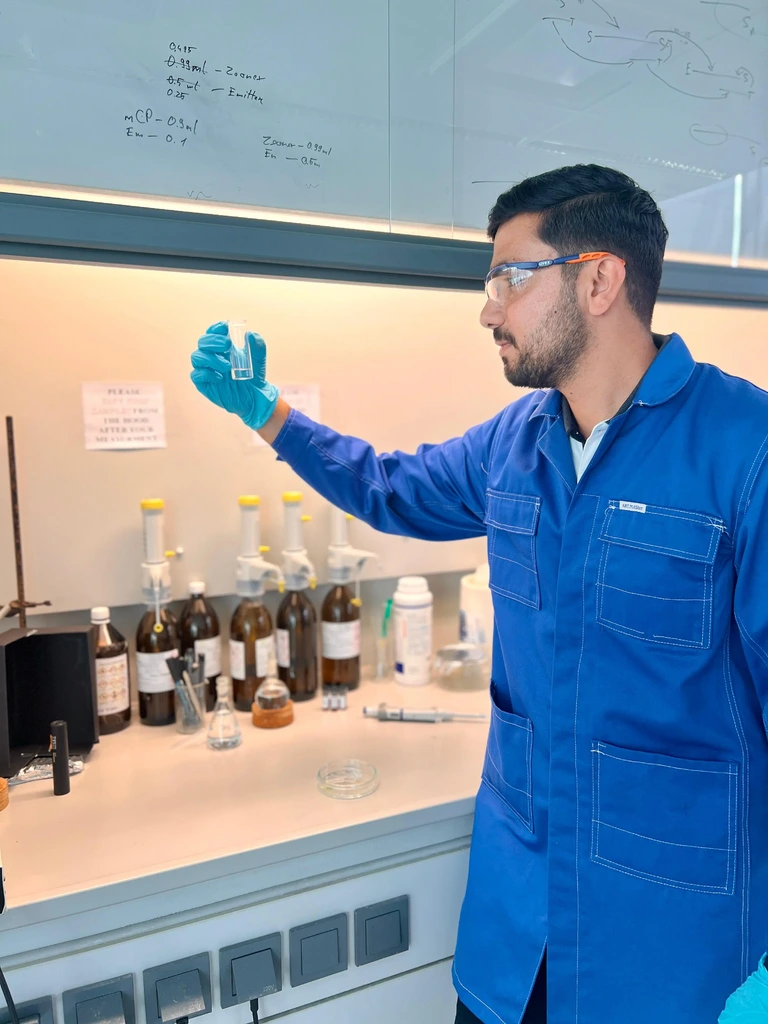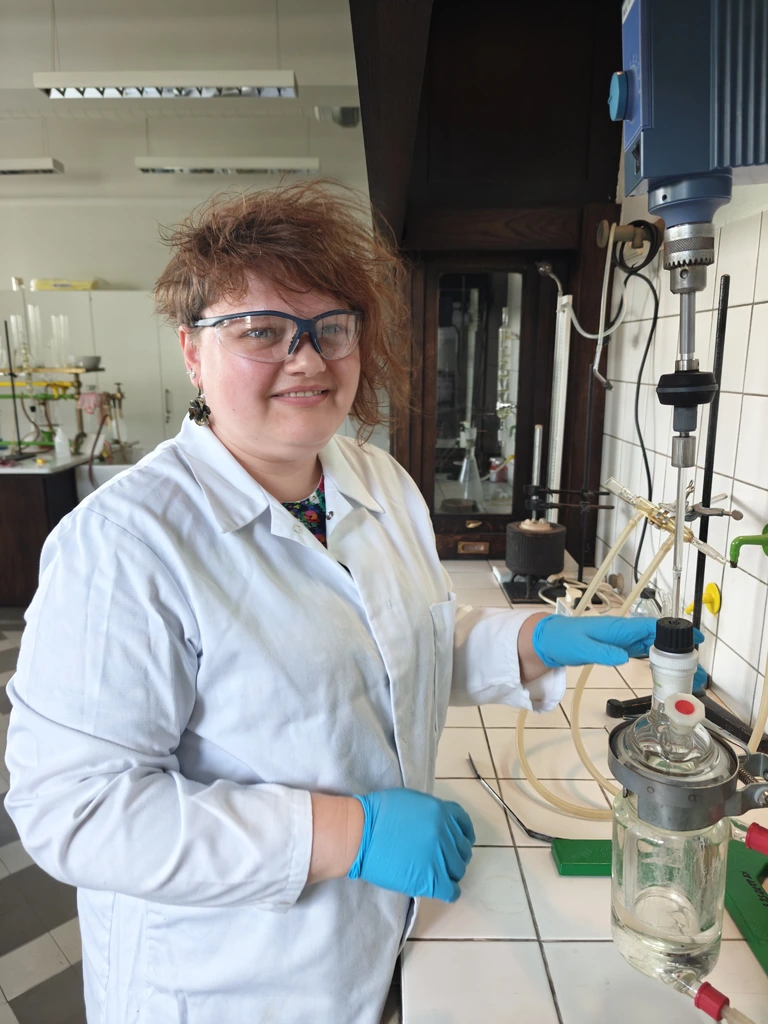In modern devices, such as phone screens or advanced sensors, light is often generated by pairs of organic molecules, where one molecule, known as the donor, transmits electrons, and the other, referred to as the acceptor, receives them. An international team of scientists from Kaunas University of Technology, KTU, Lithuania, has, for the first time, observed the luminescence of an excited complex formed by two donor molecules. This discovery opens new possibilities for developing simpler, more efficient, and more sustainable optoelectronic devices.
One of the most important applications of this discovery is in organic light-emitting diodes (OLEDs). OLED technology is widely used in everyday devices such as phones, TVs, smartwatches, and car dashboards. Compared to traditional LEDs, OLEDs offer flexibility, brighter colours, higher contrast, and higher energy efficiency.
However, OLEDs are often made from complex or costly components, for example, metal-organic complexes containing iridium or platinum. To make OLEDs more accessible, researchers are exploring organic compounds as alternatives. The KTU team, in collaboration with Ukrainian scientists, has not only designed new organic compounds suitable for OLED technology but also successfully synthesised them. Their discovery allows for simplified OLED architectures where all active materials are organic, with efficient molecular interactions.
Improperly stored, picric acid can become highly sensitive to friction or heat, posing serious safety risks. When exposed to this compound, the luminescence of the newly developed molecules is quenched, allowing it to act as an optical sensor capable of detecting even very low concentrations of dangerous explosive substances.
“Materials that intensively emit light and whose light emission is drastically suppressed in the presence of nitroaromatic compounds enable the creation of sensitive, reliable, and convenient sensors. Such solutions are important not only for military and security applications but also for environmental protection,” says Dr Monika Čekavičiūtė, the scientist who developed and synthesised the new compounds.
Challenging established scientific beliefs
The luminescence of a complex formed by two donor molecules is a novel phenomenon in science. “One of the most exciting aspects of our invention is discovering new ways molecules can behave and emit light, not only individually but also in unexpected combinations with similar molecules. This challenges traditional scientific views,” Prof. Gražulevičius says.
The research of KTU scientists encompasses the design and synthesis of a series of new multifunctional organic semiconductors tailored for modern organic optoelectronic systems.
“Unlike many organic emitters whose luminescence decreases when molecules are closely packed, our developed molecules show the opposite effect – their luminescence increases. This phenomenon is known as aggregation-enhanced emission,” explains Rashid.
This feature not only enhances performance and lowers energy consumption but also improves device stability and lifespan. Moreover, the layers of the material are less prone to crystallisation, extending device durability without performance loss.
“In our study, molecular aggregation, previously seen as a problem, becomes a functional advantage. This fundamentally changes how we approach the use of organic materials in optoelectronics,” says Prof. Gražulevičius.
The article From Donor-Donor Exciplex-Forming Interfaces to Detection of an Explosive Compound with Phenylethenyl Derivatives Redefining OLED Efficiency and Extremely High Sensitivity to Picric Acid is available here.





